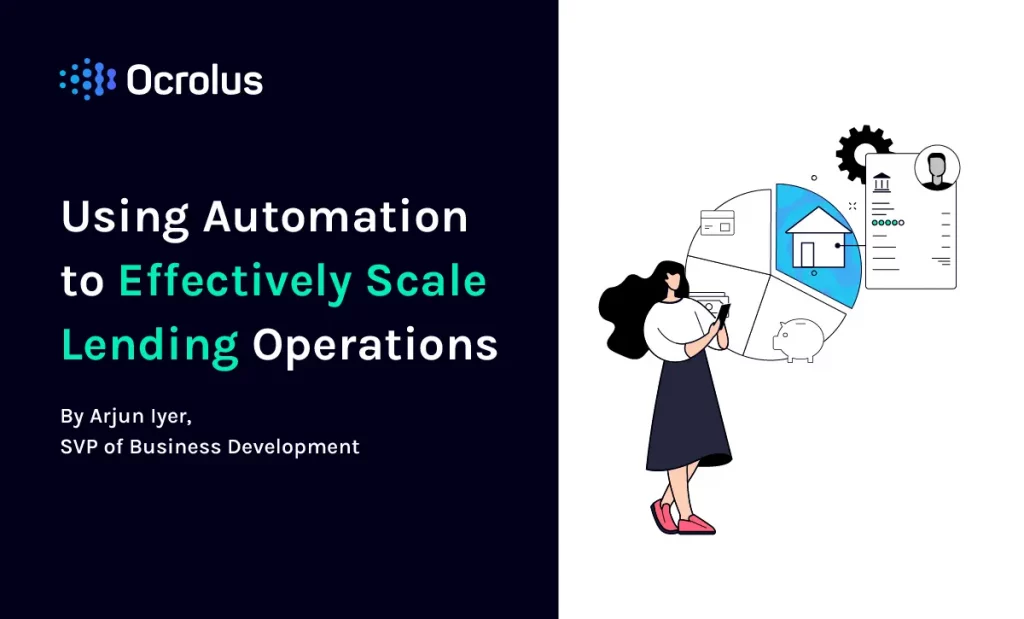This website uses cookies so that we can provide you with the best user experience possible. Cookie information is stored in your browser and performs functions such as recognising you when you return to our website and helping our team to understand which sections of the website you find most interesting and useful.
Using Automation to Effectively Scale Lending Operations

Staffing needs in the mortgage industry have always fluctuated wildly. As the real estate market has ebbed and flowed, so has the need for mortgage lending staffers: originators, underwriters, associates, etc. But the constant challenge to keep the right number of staff on hand can be costly, leaving many lenders wondering if using automation to effectively scale their lending operations could be the solution.
For example, when the coronavirus pandemic hit the U.S. economy in March 2020, the residential real estate market ground to a halt. In April and May 2020, home sales dropped to their lowest levels since 2007. In April, the inventory of homes for sale decreased by 17 percent from the previous year, and home showings were down 40 percent.
However, within a few months, home sales were booming due to low-interest rates and the rise in the percentage of individuals working, schooling, and exercising from home. This boom continued steadily, and by the second quarter of 2021, home sales were up 23 percent over last year. But as interest rates rose, demand for mortgages and refinances slowed quickly.
Such sharp highs and lows in the demand for homes—and mortgage loans—can mean that mortgage providers need to quickly adjust their lending operations, and hire (and fire) staff according to their current needs. Because the demand can change so quickly, it can be challenging to anticipate staffing needs, and the inability to anticipate those needs can have a steep price for mortgage lenders.
The Costs of Changes in Lending Operations and Inadequate Staffing
When your mortgage business involves manual underwriting and every task requires the right staffer to undertake it, maintaining enough workers is vital. If you don’t have enough employees to manage loans promptly, you won’t be able to keep up with demand and could lose business as service levels suffer.
However, when the demand for mortgage loans and refinance loans slows, keeping all those employees on staff may mean you are paying people to sit by idly. Furthermore, as the Great Resignation has driven up salaries in recent months, you could be paying your mortgage lending staff a lot of money to be idle.
Letting employees go is also risky. Research from the Society for Human Resources Management suggests that the costs of replacing a salaried employee can reach as high as 50-60 percent of the employee’s annual salary—that’s a price tag of $50,000 to $60,000 for an employee earning $100,000. That includes the cost of hiring and training new workers when it’s time to replace those who left. There are also lost opportunity costs. For instance, when a particular loan originator leaves, the mortgage company is unlikely to get business from all the potential customers with whom that lender had relationships.
Lending Automation Solves the Mortgage Staffing Dilemma
With high costs of mortgage staffing and turnover, the most economical and effective solution to managing changing workflows is automation. Whether the mortgage industry is experiencing a deep lull or an extreme spike in application volume, automated processes allow mortgage lenders to deftly manage demand with the same number of staffers. Lending automation also ensures a streamlined customer experience, regardless of the current staffing situation.
For example, Ocrolus helps mortgage lenders review and process millions of pages of loan documents every month with lending automation. These automated processes for lending operations include:
- Eliminating manual data entry by extracting accurate data from applicant forms
- Verifying borrower income
- Categorizing and parsing tax and mortgage forms
- Flagging suspicious documents for mortgage lending fraud
- Enabling powerful analytics by structuring data
Effectively Scaling Lending Operations with the Right Automation Solution
Whether your mortgage company needs to process a huge wave or a small trickle of applications, using automation to effectively scale lending operations can help you maintain a consistent level of staffing. Automation reduces tedious work, time spent, and human error, increasing the volume of data processed and improving accuracy. In addition, the right mortgage automation solution can ensure that underwriting decisions are always informed, and customers always receive prompt streamlined service.
Ocrolus is a document automation software that enables automated workflows for mortgage companies, capturing data from pay stubs, bank statements, and tax forms to help industry professionals do their jobs better and more efficiently. When much of the heavy lifting of data entry and classification is automated, lenders can much more easily deal with market fluctuations while maintaining the same staff size and scaling their lending operations.






